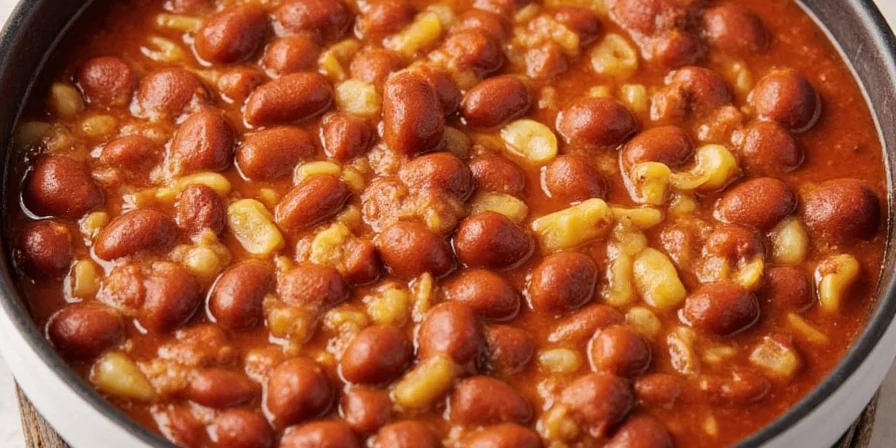Authentic Skyline Chili Recipe: Complete Ingredients and Step-by-Step Instructions
Looking for the exact Skyline Chili recipe that tastes like Cincinnati's original? Here's the proven method using pantry staples that creates that signature cinnamon-kissed broth without proprietary ingredients. Follow these precise steps for restaurant-quality Five-Way chili at home.

What Makes This Skyline Chili Recipe Authentic
Skyline Chili's magic comes from specific ingredient ratios and cooking techniques, not secret ingredients. This Cincinnati specialty—founded in 1949 by Greek immigrant Nicholas Lambrinides—defies traditional chili conventions with its thin consistency, subtle sweetness, and spaghetti base. Unlike robust Texas varieties, authentic Skyline uses baking spices instead of chili powder for its distinctive profile.

Complete Skyline Chili Ingredients List
- 1 lb 90% lean ground beef (critical for proper texture)
- 2 tbsp tomato paste (concentrated umami base)
- ½ tsp true cinnamon (Ceylon, not cassia)
- ¼ tsp allspice (adds clove-like complexity)
- 1 tsp cumin (earthy depth anchor)
- 1 tsp Dutch-process cocoa powder (tannic balance)
- 1 cup low-sodium beef broth (creates thin consistency)
- 1 tbsp apple cider vinegar (brightens delicate spices)
- Salt to taste
Step-by-Step Skyline Chili Instructions
- Brown beef over medium heat; drain ALL fat (excess grease mutes delicate spices)
- Add tomato paste; cook 2 minutes until brick-red (develops flavor)
- Stir in spices until meat is uniformly coated (critical for even distribution)
- Pour in broth; simmer uncovered 25 minutes (concentrates flavors without thickening)
- Add vinegar off-heat; rest 10 minutes before serving (preserves volatile acids)

| Ingredient | Why It Matters for Authentic Flavor |
|---|---|
| True cinnamon (Ceylon) | Triggers sweet receptors without sugar, creating signature profile |
| Dutch-process cocoa | Provides tannic bitterness for balance without acidity |
| Apple cider vinegar | Brightens flavors while preserving delicate spice notes |
| 90% lean beef | Minimal fat prevents masking of subtle spice profile |
Skyline's "Way" System Explained
Skyline's unique ordering system defines portioning for the perfect Cincinnati experience:
- One-Way: Just the chili
- Two-Way: Chili + spaghetti
- Three-Way: Chili + spaghetti + cheese
- Four-Way: Add onions or beans
- Five-Way: All toppings combined (most popular)

| Attribute | Skyline Original | Homemade Version |
|---|---|---|
| Broth consistency | Thin, soup-like | Adjustable via simmer time |
| Spice balance | Standardized sweetness | Customizable depth |
| Cost per serving | $6.50 (Five-Way) | $1.75 (with quality ingredients) |
Critical Pro Tips for Perfect Skyline Chili
- Fat control is non-negotiable: Excess grease completely masks delicate spices
- Vinegar timing is crucial: Adding off-heat preserves volatile flavor compounds
- Simmer uncovered: Essential for proper concentration without thickening
- Cheese technique: Grate cold cheddar directly onto hot chili for perfect melt
- Resting time matters: 10-minute rest allows flavors to fully integrate

Why This Recipe Works: The Flavor Science
Skyline's brilliance lies in strategic simplicity. The thin broth carries complex flavors efficiently while spaghetti provides textural contrast. Lambrinides adapted Greek meat-sauce traditions (like pastitsio) where cinnamon enhances savory dishes. Modern flavor chemistry explains why:
- Cinnamon's cinnamaldehyde stimulates sweet receptors without added sugar
- Cocoa's theobromine creates mouth-coating richness despite low fat content
- Vinegar's acetic acid brightens flavors without overpowering delicate spices
This precise balance—warmth without heat, richness without heaviness—makes Skyline uniquely craveable. The absence of beans preserves the broth's clarity, distinguishing it from Midwest competitors.

Frequently Asked Questions
Why doesn't Skyline Chili use chili powder?
The recipe intentionally avoids chili powder to maintain a clean, sweet-spice profile. Traditional chili powder would introduce competing heat and earthiness that overwhelms the delicate cinnamon-cocoa balance central to Skyline's identity.
Can I make Skyline Chili without cinnamon?
While possible, omitting cinnamon fundamentally alters the dish. Cinnamon's cinnamaldehyde triggers sweet receptors without sugar, creating Skyline's signature profile. Substitutes lack this specific chemical interaction and will produce a different flavor outcome.
Why is Skyline Chili served over spaghetti?
This reflects Greek immigrant culinary adaptation. Lambrinides applied Mediterranean pasta-sauce traditions to American chili culture. The thin broth penetrates spaghetti effectively, while the pasta provides textural contrast to the smooth meat sauce.
How long does homemade Skyline Chili last refrigerated?
Properly stored in airtight containers, it maintains optimal flavor for 3-4 days. The vinegar content acts as a natural preservative. Reheat gently to preserve the delicate spice balance—boiling will cause volatile compounds to evaporate.
Is Skyline Chili considered spicy?
No, it's intentionally mild. The spice blend focuses on warmth (cinnamon, allspice) rather than heat. Capsaicin-based heat would disrupt the precise sweet-savory equilibrium that defines Skyline's profile.











 浙公网安备
33010002000092号
浙公网安备
33010002000092号 浙B2-20120091-4
浙B2-20120091-4